I met Dick Wagner in 1976. I was fresh out of college, living in Seattle, and boatless; Dick and his wife Colleen ran a boat livery out of their home on Lake Union. Their home is indeed on Lake Union: It’s a white clapboard-sided houseboat afloat on a raft of western red cedar logs. In their watery “back yard” they kept a half dozen or so rowing skiffs, mostly lapstrake White Bear skiffs. I rented one of the skiffs for an hour and took Mary Ann, my girlfriend then, out for a tour of the lake. When we returned, Dick was ready to help us in. I wanted to impress Mary Ann with my rowing skills and started sculling the boat sideways toward the dock where Dick was waiting. I knew how sculling was supposed to work, and had tried it on occasion, but I wasn’t very good at it. I wagged the starboard oar back and forth but that didn’t slide the skiff to port. I’d had my chance, blown it, but kept wagging. Dick rolled his eyes and said: “Hand me an oar.” I extended the port oar to him and he pulled us in. I came away from my first meeting with Dick with some important lessons: pride goeth before a fall; a waterman is businesslike, not frivolous; and if you’re going to show off, you have to be really good.
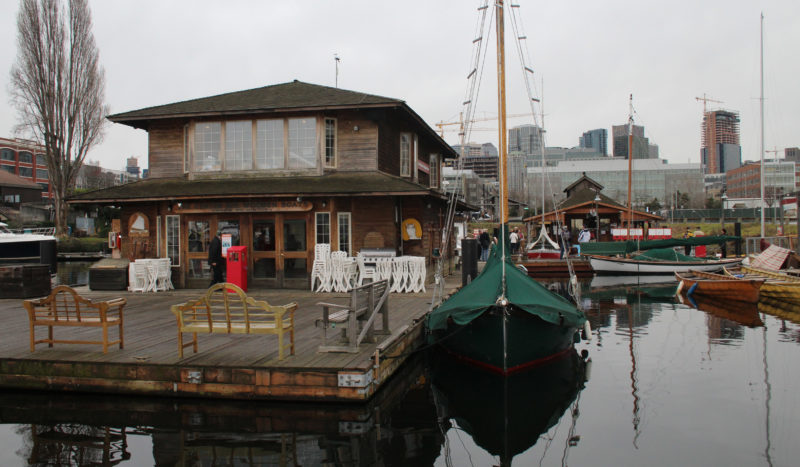
The center’s main building is anchored on Lake Union surrounded by a fleet of wooden boats. The site for the new education center is marked by a green fence to the right of the boatshop roof in the background.
In the years that followed I practiced my sculling; the Wagners went on to much greater things and created the Center for Wooden Boats at the south end of Lake Union. Since its founding in 1977, the CWB has grown to become a priceless Seattle institution, keeping the history of wooden boats alive and introducing countless people to boating. Last Tuesday, Dick and Colleen broke ground to begin the construction of the Wagner Education Center. It will house a shop much larger than the Center’s current floating boatshop and provide space that can that can be adapted for use as a sail loft, classrooms, and exhibition galleries. If construction goes according to plan, the building will be finished and open this October. It will assure the continuing and growing interest in wooden boats for generations to come.
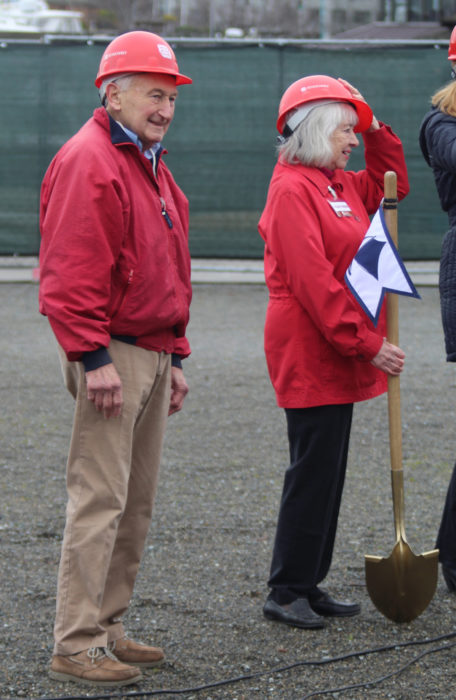
Dick and Colleen prepare to break ground for the new building that will carry their names.
The education center will be a well-deserved tribute to the Wagners. Over the nearly four decades that have passed since I first met Dick, the Center for Wooden Boats has become an important part of my life. It lies literally in the shadow of the Space Needle, a Seattle landmark that I’ve visited only three times since it opened in 1962 along with the World’s Fair. In contrast, I visit the CWB dozens of times a year and I’ve never grown tired of it.
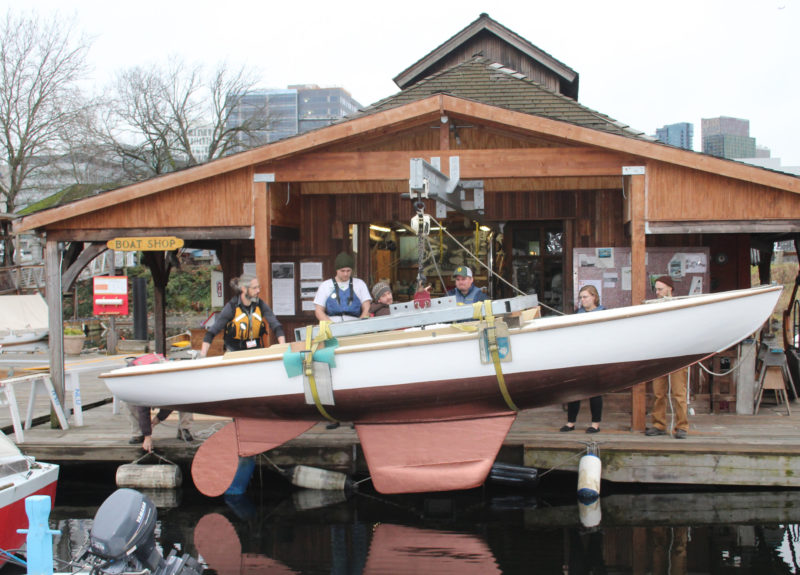
To celebrate the ground-breaking ceremony, the CWB shop relaunched one of the Center’s eight Blanchard Junior Knockabouts. Lead Boatright Bradley Suedekum (at left in the yellow PFD) directs the action. The new building will have room for a shop twice the size of this one.
The Wagners still live in their houseboat on the north end of the lake and I pass by it every time I’m paddling or rowing to the Center, ever grateful for my friendship with Dick and for what he and Colleen have done for the wooden boat community.
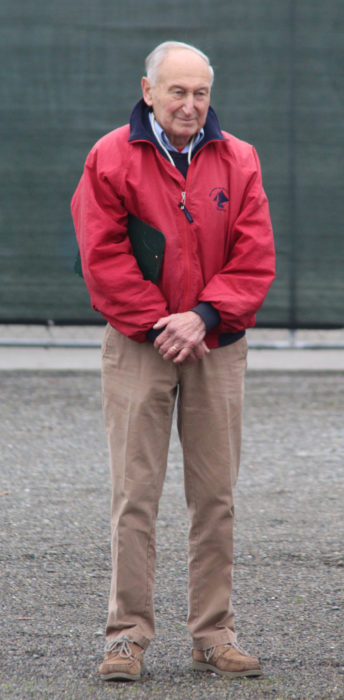
Dick Wagner, now in his mid 80s, remains active at the the center he founded 39 years ago.
![]()
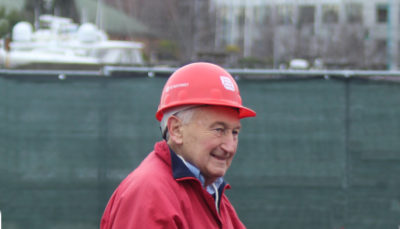
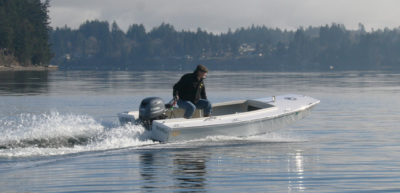
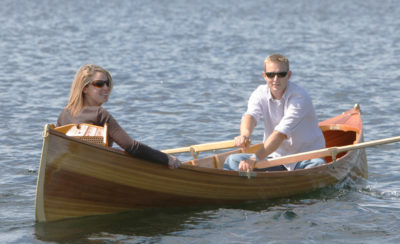
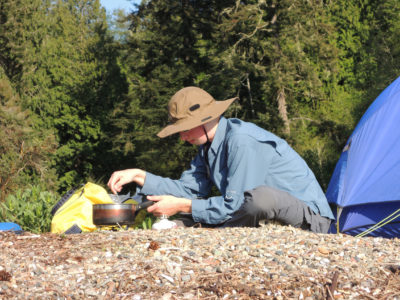
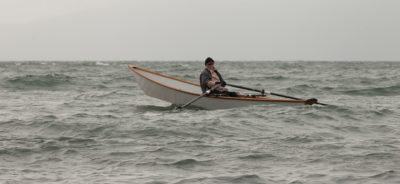
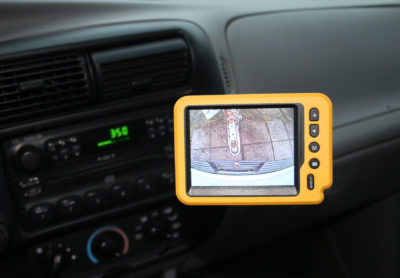
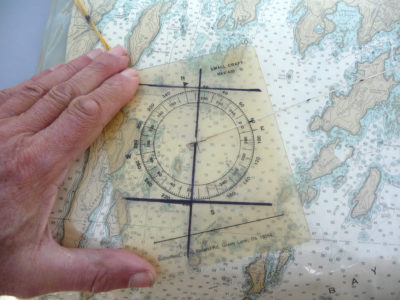
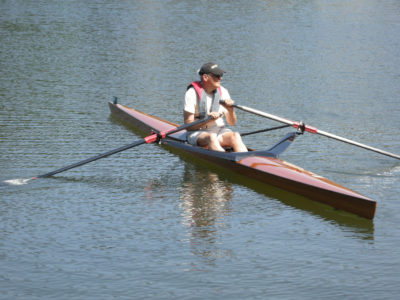

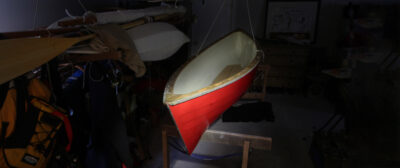
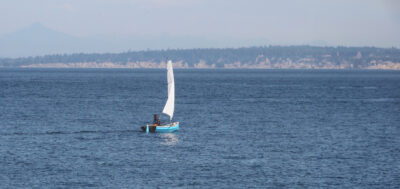
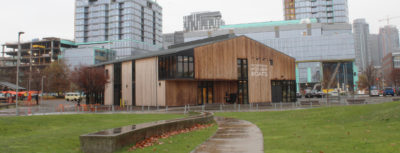
I’m so excited to see the ground finally broken for the Education Center and so proud of my cousin, Colleen, and her husband for their priceless contributions to the Center for Wooden Boats. My heartiest congratulations to them from California!